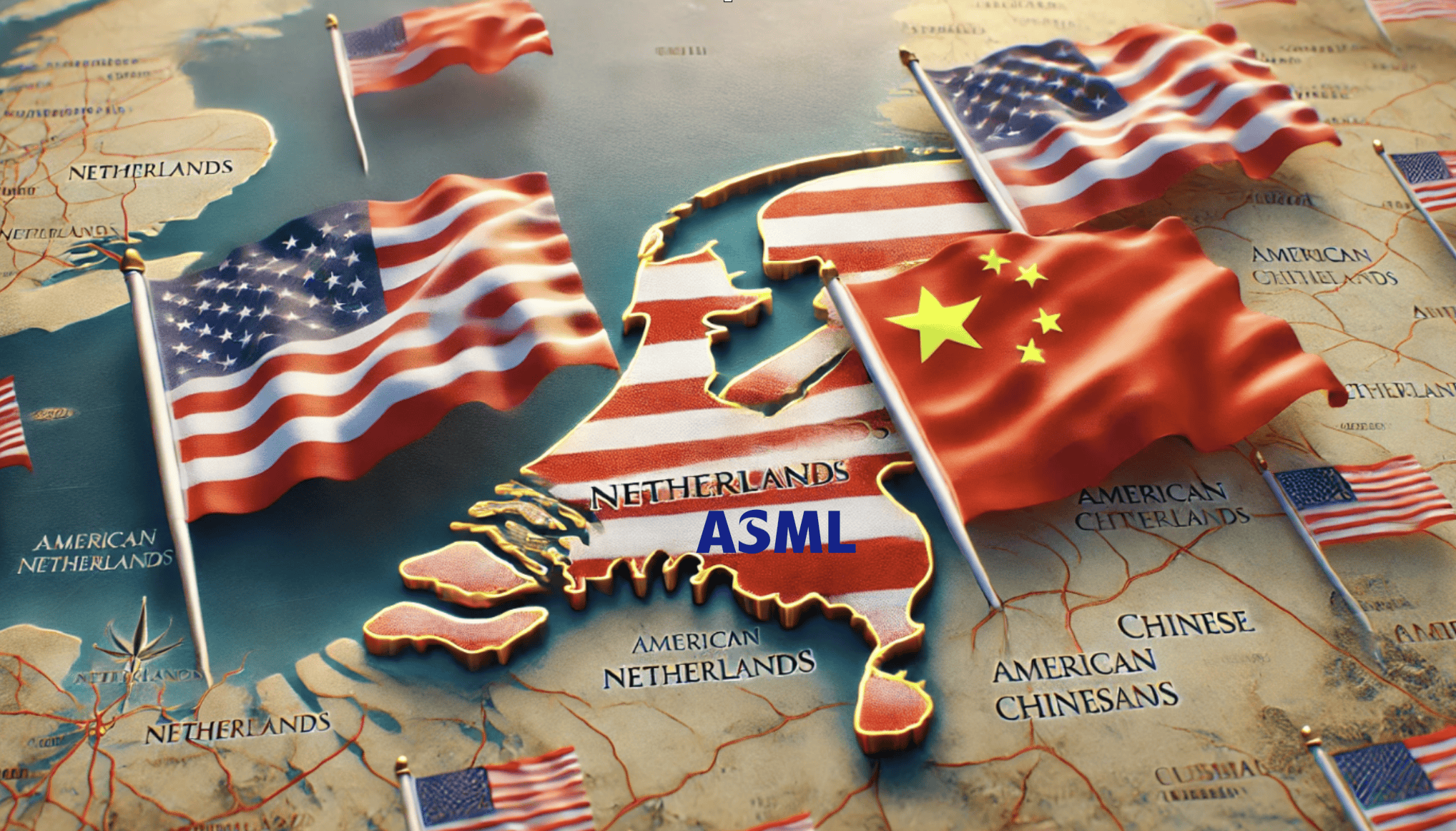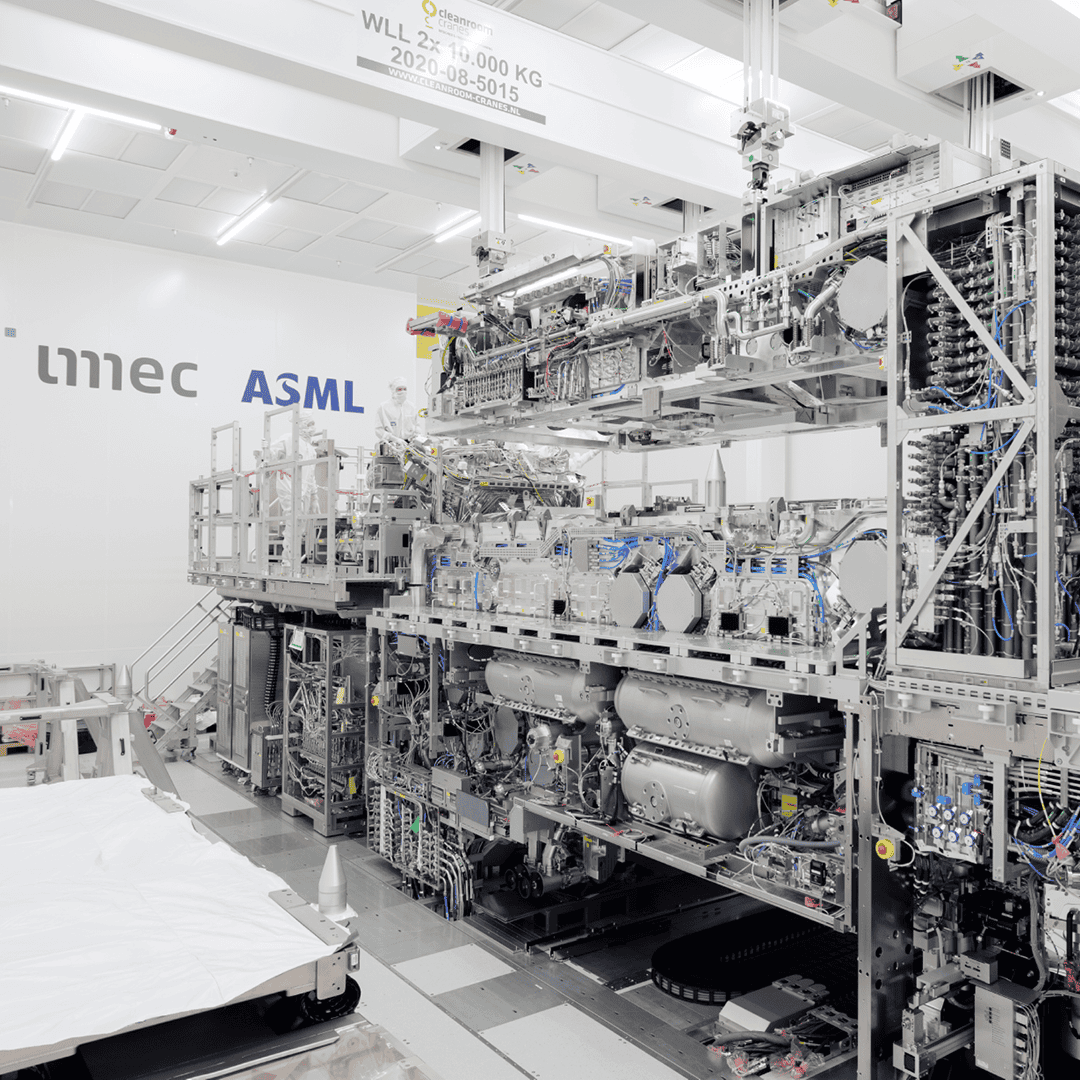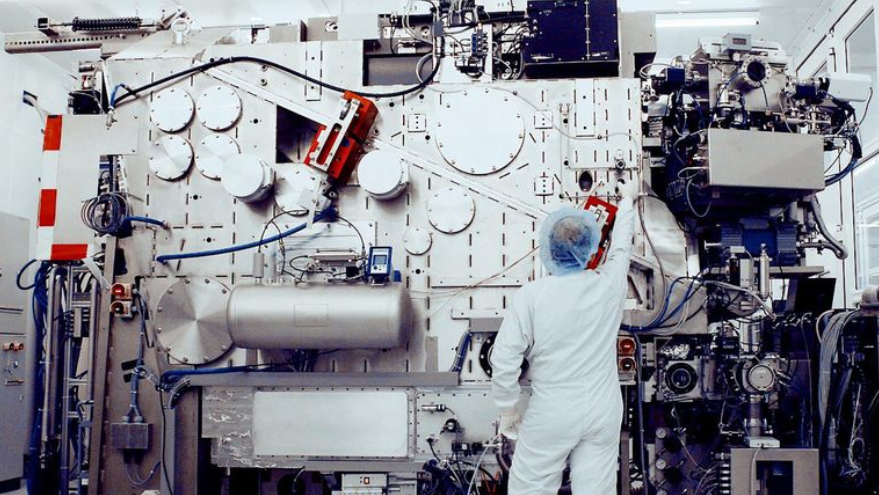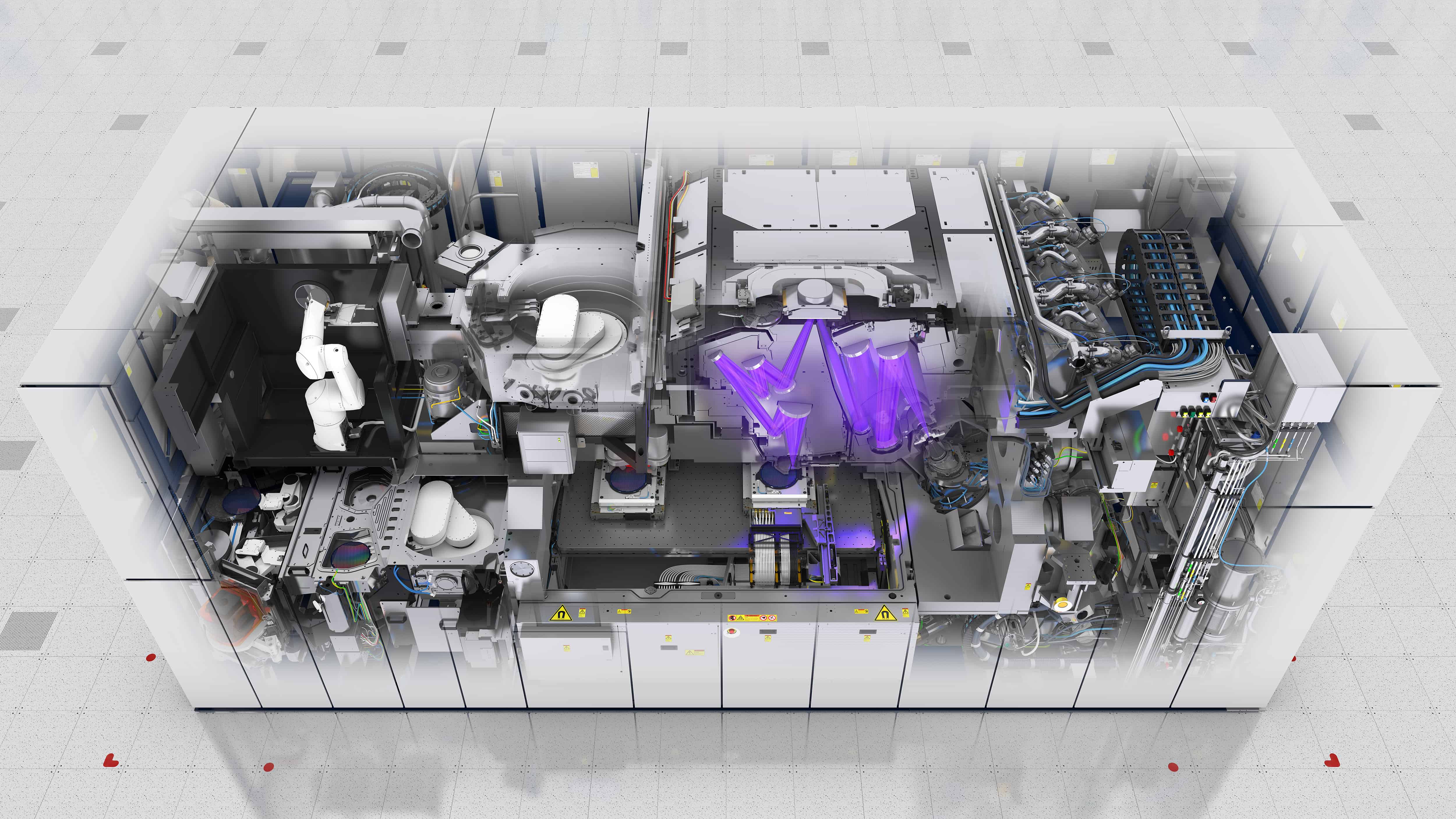
Asia Society France hosted an expert discussion exploring how the Dutch lithography supplier ASML navigates the rising geopolitical tensions between the U.S. and China. Speakers in Paris included Pengfei Chen, a management consultant focused on enterprise digital transformation; Pierre Haski, a geopolitical correspondent and journalist; and Marc Hijink, a financial reporter, columnist, and the author of “Focus: The ASML Way.” Asia Society France Founding Trustee and Co-Chair Duncan Clark moderated the conversation.
Good to know: the Paris conversation occurred just one day before ASML erroneously published its third quarter results a day earlier than it should have—it caused shares to fall 16%. ASML said the fault was due to “a technical glitch.” The quarterly figures showed that demand for ASML’s chip machines fell sharply. The total value of orders in the third quarter was €2.6 billion, down by half from the previous quarter. ASML indicates slowdowns in “other market segments” are taking longer than expected. These facts, made public on October 15, could not be part of the discussions in Paris on October 14.
Here’s the whole conversation at Asia Society France, below is our take from the discussion:
ASML, the Dutch lithography supplier central to the global semiconductor industry, finds itself at the heart of a geopolitical tug-of-war between the U.S. and China. At a panel discussion hosted by Asia Society France, experts examined how ASML navigates this challenging landscape. Speakers shed light on the intricate balance ASML must maintain amidst rising tensions.
Marc Hijink, who authored a book on ASML, began by providing an overview of the company’s unique position in the semiconductor industry. “ASML is not only a leader; it is a monopoly,” Hijink remarked. “The company makes the machines that produce the most advanced chips in the world, and 90% of chips globally are made using ASML’s lithography equipment.” This dominance places ASML at the center of the semiconductor supply chain, which has been increasingly strained by political friction, particularly between the U.S. and China.

Hijink highlighted how ASML’s lithography machines are critical to producing high-end semiconductors used in everything from smartphones to AI chips. Despite its technological prowess, the company has largely flown under the radar until recent years, when it became “front page news almost every day,” Hijink noted. The rising prominence of ASML has coincided with the global “chip war,” where control over the semiconductor industry has become a strategic priority for nations.
The U.S. government has pressured ASML to limit its sales to China, particularly in relation to its cutting-edge Extreme Ultraviolet (EUV) lithography machines, which are essential for producing the most advanced chips. The U.S. has framed this pressure as a matter of national security, aiming to prevent China from gaining access to technology that could enhance its military and AI capabilities.
However, Hijink pointed out the complexities of these restrictions, noting that ASML’s machines are products of a vast global supply chain. “Eighty percent of the value of these machines comes from suppliers, many of them in Europe,” Hijink said. This interdependence complicates efforts to impose strict export controls, as any disruptions could reverberate through Europe and beyond.
Sputnik moment
Pierre Haski added a geopolitical perspective, likening the current situation to a “Sputnik moment” for the U.S. — a reference to the shock felt when the Soviet Union launched the first artificial satellite in 1957, igniting the space race. In 2015, when China outlined its Made in China 2025 plan, which aimed to lead in key technologies such as semiconductors, the U.S. took notice. “That moment triggered Washington’s strategic focus on semiconductors and led to the current policies aimed at containing China’s rise in tech,” Haski explained.
The panel also delved into how these export restrictions affect ASML’s operations. Hijink revealed that while the U.S. has successfully pressured the Dutch government into aligning with its export controls, ASML continues to sell older-generation lithography machines to China. These machines, although not at the cutting edge, still allow China to produce relatively advanced chips through a process of layering and multiple exposures. “China is pragmatic,” Hijink said. “They find workarounds, and the longer this goes on, the more they’ll develop their own solutions.”

The Silicon Curtain
Despite the pressure, ASML remains committed to its strategy of maintaining open relationships with its customers worldwide. “ASML sees itself as the Switzerland of the chip industry,” Hijink quipped. “They want to stay neutral, but geopolitics is pulling them in.” This tension is amplified by ASML’s significant presence in the U.S. and China, with thousands of employees in each country. As a result, the company must carefully navigate the demands of both governments while striving to continue its global growth.
Looking forward, the experts agreed that the semiconductor industry will continue to be a battleground for geopolitical competition. “We’re moving from an Iron Curtain to a Silicon Curtain,” Hijink remarked. The chip war, they suggested, is only intensifying, and ASML, with its unparalleled technological expertise, is likely to remain a pivotal player.
As the world becomes more dependent on semiconductors, the stakes for companies like ASML will only grow. How the company navigates this new reality will have profound implications not just for its own future but for the global tech landscape as a whole.






